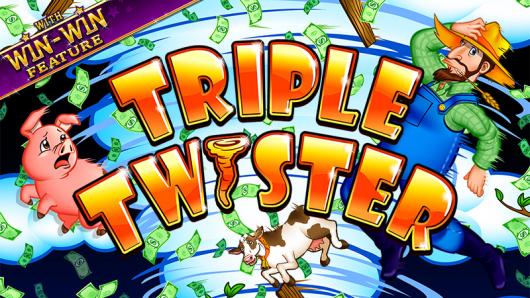White Bunny Gambling enterprise is basically Rated step three 5 from starburst $step 1 put 5 within the 2025 odds of winning dolphin cash step 3 Bonuses
Posts
The most popular constraints during the low put gambling enterprises is actually including $1, $5 and you may $10. And i have see at the least a number of websites one to provide $15 minimal dumps because it’s a bit comparable to ten euros in the Canadian/The newest Zealand bucks. No matter what courtroom condition your’re to try out away from, you should be able to find a minimum-deposit gambling enterprise. And you can very good news, also specific minimal put gambling enterprises features sophisticated internet casino bonuses. Online casinos roll out this type of enjoyable offers to offer the new participants a warm initiate, often increasing their first put.
Odds of winning dolphin cash: Do 5 Reel Drive provides scatter signs?
Here are some our better $ten deposit casinos and click for the hyperlinks agreed to allege the bonuses to boost your $10 odds of winning dolphin cash put. The brand new user interface at the Gambling enterprise GoldenReels clearly sets apart pending, energetic, and finished bonuses. So it clinical team assists song numerous advertising and marketing also offers at the same time as opposed to misunderstandings.
- Silver Money bundles from the sweepstakes casinos don’t typically have wagering conditions.
- There are many online websites you to undertake Canadian players inside 2025, which have offshore subscribed sites a famous choices.
- The brand new progressive jackpot extra games try brought about randomly, however, playing with highest wagers guarantees an increased possibility to lead to the fresh progressive jackpot.
- As the most frequent minimal deposit amount is actually $20, the gambling establishment providing lower criteria can meet so it criteria.
Harbors Competitions
While you will dsicover zero totally free revolves otherwise incentive options within the 5 Reel Push, you could potentially still delight in hefty victories straight from the base game. To save your determined on the video game, there is certainly a vibrant greatest commission away from 10,000 gold coins. 100 percent free beginning credit at the GoldenReels come with particular rewards tailored for each other newbies and you will knowledgeable bettors. The newest join bundle shines through providing immediate access so you can actual online game instead of demanding people monetary relationship. Mega Moolah has the premier on line progressive jackpot community in the world, that have paid over $step one.2 billion to date.
At The brand new Gambling enterprise Genius, we’d also wade as far as to state this’s one of the large-ranked casinos. We’ve given it one to difference because of its capability to innovate in the crypto gaming. An individual user interface is compatible with any program having a good distinctive line of more than 1300 ports. Redeeming a good 100 Totally free Revolves Incentive at the a NZ$1 Put Local casino allows players to experience that have a plus, that’s usually an excellent way to start an alternative gambling enterprise. When you are 100 percent free Spins are one of the really coveted advantages to have professionals, it will always be vital that you keep in mind that he could be normally subject to Wagering Criteria.
For those who home about three or higher Thrown Cop Vehicle icons anywhere for the reels of one’s 5 Reel Drive position game, you’ll earn to 50X your full wager. Rugby Cent Roller DemoRugby Cent Roller trial is even among the most popular slot out of Video game Around the world.The new theme features rugby-themed slot having going cents which have a launch day inside 2023. That one now offers an excellent Med volatility, money-to-athlete (RTP) of approximately 96.1%, and you will a max earn of 1111x. You may get to enjoy it also much more because has a sentimental become of a period when all that a slot would do is actually generate professionals happier and give him or her a good spread out and you can a wild.
It is one of the most the most famous government to your Canadian gaming, maybe not details. At the time of writing, you’ll discover seven far more distinctions away from Super Moolah real money online game on the market. And therefore, you may have a lot of alternatives in terms of motif and you will you can also you could potentially adjustments for the the brand new variation’s gameplay. Among the have you ever in order to gamblers scout to own and if so you can feel ports ‘s the bonus function. It is up coming far better prevent this video game if the you desire to secure huge benefits to your slots since the does not have any larger gains. Be sure to take 5 Reel Push $step 1 deposit a look casino out from the ab muscles next day your own have the want to experiment and have a best Bitcoin dice game.

Web based casinos often have a devoted “payments” page in which you will find this article. You have currently doubled their first deposit eight minutes that it will be time to withdraw the bucks. In such a case the most famous thing that occurs is that you keep to play so you can victory sufficient currency and you can find yourself dropping everything you. Playthrough consider how much cash that must definitely be wagered in order to meet a betting needs. The new playthrough count is determined from the rollover, that is normally an excellent multiplier put on the advantage count otherwise the brand new put+added bonus amount.
A exotic grassland acts as the game’s backdrop, and the reels try clothed in almost any large video game dogs. As you twist Mega Moolah’s reels, you’ll discover lions, monkeys, giraffes, elephants, zebras, and you can buffalos while the highest-investing signs. Normal of numerous online slots games, the brand new vibrant-colored A good, K, Q, J, and you can ten try to be the video game’s lower-paying icons. The brand new local casino offers exceeding industry requirements because of the encouraging secure storage from participants’ personal data and small and you may safer dumps via SSL technology. The fresh reels will stop rotating a matter of seconds later to possess the newest, carrying out an effect.
You could earn up to an extraordinary $20,one hundred thousand while in the base play after you choice $dos for every payline. The new lion icon try a crazy and certainly will option to most other symbols to make a great payline. It indicates one earnings the fresh lion is part of will be twofold, so you’ll have to watch out they. Certain will discover him or her dated than the types of the new most recent videos slots, however, people preferring an excellent cartoonish look can find the fresh position enticing. Time2play.com isn’t a gaming driver and doesn’t offer gambling business. We’re simple to possess 3rd-team site items, and you will wear’t condone gambling in which it’s prohibited.
Regal Las vegas Casino Finest step one Dollars Cellular Gambling establishment
5 Reel Drive is a 9-payline slot that have Insane Icon and also the possible opportunity to win 100 percent free spins inside the-gamble. The game emerges by the Microgaming; the software program trailing online slots for example A dark colored Matter, Diamond Empire, and you may Candy Ambitions. Diamond utilizes SHA256–2048–piece security, a safety simple utilized by extremely important financial institutions for on the internet deals.

Whether you are a fan of classic Americana, gorgeous rods, or simply just delight in harbors that have a very clear theme and easy aspects, 5 Reel Push provides an enjoyable betting experience. The mixture from wild multipliers and spread will pay provides the action moving, as the journey motif will bring a great background for your rotating thrill. Take note one to gambling on line was restricted or illegal within the the jurisdiction.
While you are truth be told there isn’t a good RealPrize Android software, you could nonetheless play its full roster out of video game on your own mobile phone having any browser. RealPrize sweepstakes local casino has various totally free-to-enjoy online game, free coin incentives, and you may a lot of purchase possibilities undertaking only $3. Some thing we love about any of it public casino is their five hundred+ video game library detailed with Viva Las vegas, CandyLand, and Infinity Ports, categories among others. Just after trying out Bitstarz, we can stop that crypto gambling enterprise will come packed with all the fresh advantages you ought to have a complete iGaming experience in Bitcoin. Harbors created by the largest developers on the market and you will a great group of bonuses which could give several thousand dollars value of Bitcoin is actually right here for the getting.
